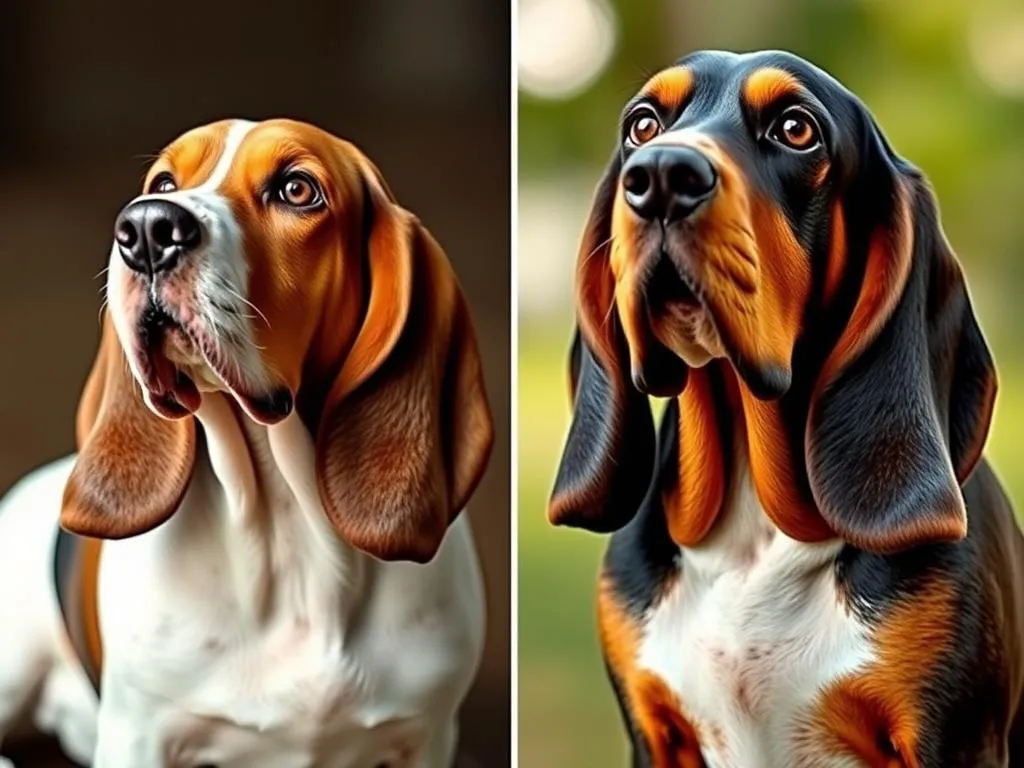
Basset Hounds are beloved dogs known for their droopy ears, short legs, and exceptional sense of smell. These charming canines have captured the hearts of many dog lovers worldwide. However, when considering bringing a Basset Hound into your home, it’s essential to understand the distinctions between the European vs American Basset Hound. This article delves into the history, physical characteristics, temperament, health considerations, training needs, grooming, and more, helping you make an informed choice.
History of the Basset Hound
Origins of the Basset Hound
The Basset Hound is a breed that traces its roots back to France. Derived from the French word “bas,” meaning low, the Basset was bred primarily for hunting small game due to its keen sense of smell and excellent tracking ability. Historically, Basset Hounds were favored by nobility for their hunting prowess, and they became companions for those who enjoyed the sport.
Development of the European Basset Hound
In Europe, particularly in France and the UK, the European Basset Hound was refined through selective breeding. These dogs were bred to be slightly larger and more robust, enhancing their endurance while hunting. The European version often reflects cultural values of the regions, emphasizing traditional hunting styles and aesthetics. This lineage has maintained a strong connection to the breed’s original purpose, making them more adept at tracking and hunting.
Development of the American Basset Hound
In contrast, the American Basset Hound evolved when the breed was introduced to the United States in the late 19th century. American breeders focused on creating a dog that was more suitable for companionship rather than solely for hunting. This led to adaptations in their physical appearance and temperament. Over time, American Basset Hounds have become more popular as family pets, emphasizing a more laid-back demeanor and specific physical traits.
Physical Characteristics
Size and Weight Comparisons
When discussing European vs American Basset Hound, one noticeable difference is in size. European Basset Hounds tend to be slightly larger, averaging about 14-15 inches in height and weighing between 50-65 pounds. In comparison, American Basset Hounds typically stand around 12-14 inches tall and weigh between 40-60 pounds. This slight variance in size reflects the different breeding goals of each region.
Coat and Color Variations
Both types of Basset Hounds share similar coat types, characterized by short, smooth fur that is easy to maintain. However, there are differences in color patterns. European Basset Hounds often exhibit a wider range of colors, including tri-color (black, white, and tan), lemon, and red and white. American Basset Hounds, while also available in these colors, frequently showcase more distinct color patterns that emphasize their unique American heritage.
Distinctive Features
One of the most distinguishing features between the European vs American Basset Hound lies in their physical traits. European Basset Hounds typically have longer ears, which tend to hang lower, giving them a more pronounced look. Conversely, American Basset Hounds have slightly shorter ears, which are still long but may not hang as low. Additionally, American Basset Hounds often have a more elongated body shape, while European Bassets may appear stockier.
Temperament and Behavior
General Temperament
Basset Hounds, regardless of type, are known for their friendly and easy-going nature. However, there are some differences in temperament between the European and American lines. European Basset Hounds often retain a more traditional hunting instinct, which can manifest as a higher energy level and a more independent spirit. American Basset Hounds, on the other hand, are typically more laid-back and affectionate, making them great family pets.
Socialization and Interaction
Both types of Basset Hounds are generally good with children and other pets, but socialization plays a crucial role in their behavior. European Basset Hounds may require more rigorous socialization due to their hunting background, while American Basset Hounds are often more adaptable to family life. Proper training and early socialization can help mitigate any differences, ensuring a well-rounded and friendly companion.
Health Considerations
Common Health Issues
Health issues can vary between the two types of Basset Hounds. European Basset Hounds are prone to specific genetic conditions, such as hip dysplasia and certain eye disorders due to their breeding practices. Conversely, American Basset Hounds may experience health concerns related to obesity and ear infections, primarily due to their more sedentary lifestyle. Regular veterinary check-ups and a healthy diet can help manage these risks.
Lifespan and Care
The average lifespan of both European and American Basset Hounds is similar, typically ranging from 10 to 12 years. However, factors such as genetics, environment, and care can influence this. Providing a balanced diet, regular exercise, and routine veterinary care is essential for both types. Owners should be vigilant about potential health issues and ensure their pets receive appropriate medical attention.
Training and Exercise Needs
Training Approaches
Training can differ between the European vs American Basset Hound due to their varying temperaments. European Basset Hounds may require more patience and consistency in training because of their independent nature. Positive reinforcement methods, such as treats and praise, work best for both types. American Basset Hounds are generally easier to train and may respond well to a more relaxed approach.
Exercise Requirements
Both types of Basset Hounds need regular exercise to maintain their health and prevent obesity. European Basset Hounds may require more vigorous activities, reflecting their hunting background. Daily walks, playtime, and mental stimulation through games are essential. American Basset Hounds, while still needing exercise, may be content with leisurely walks and indoor play.
Grooming and Maintenance
Grooming Needs
Grooming requirements for both the European vs American Basset Hound are similar, as both types have short coats that require minimal maintenance. Regular brushing, approximately once a week, helps remove loose hair and dirt. Bathing should be done as needed, but excessive bathing can strip their coat of natural oils. Paying special attention to their ears is crucial, as Basset Hounds are prone to ear infections.
Dietary Considerations
Dietary needs can also vary slightly between the two types. European Basset Hounds may thrive on a diet formulated for larger breeds due to their size and activity level. In contrast, American Basset Hounds might require a more calorie-conscious diet, especially if they tend to be less active. Consulting with a veterinarian to establish a suitable diet for your Basset Hound is essential.
Choosing Between European and American Basset Hounds
Factors to Consider
When deciding between a European vs American Basset Hound, consider your lifestyle, living space, and activity level. European Basset Hounds may require more space and an owner willing to engage in more active play. American Basset Hounds can adapt well to various living situations, making them suitable for families or individuals with a more laid-back lifestyle.
Personal Preference
Personal preference also plays a significant role in the decision-making process. Some individuals may prefer the classic look and hunting instincts of the European Basset Hound, while others may be drawn to the affectionate nature and compact size of the American Basset Hound. Interactions with both types can help you determine which fits your personality and lifestyle best.
Conclusion
In summary, both the European and American Basset Hound offer unique characteristics that cater to different preferences and lifestyles. Understanding the key differences and similarities can help potential dog owners choose the right companion for their family. Whether you lean towards the traditional hunting traits of the European Basset Hound or the affectionate demeanor of the American Basset Hound, both can bring joy and companionship into your life. Consider your own lifestyle and preferences carefully, and you may find the perfect Basset Hound for your home.









